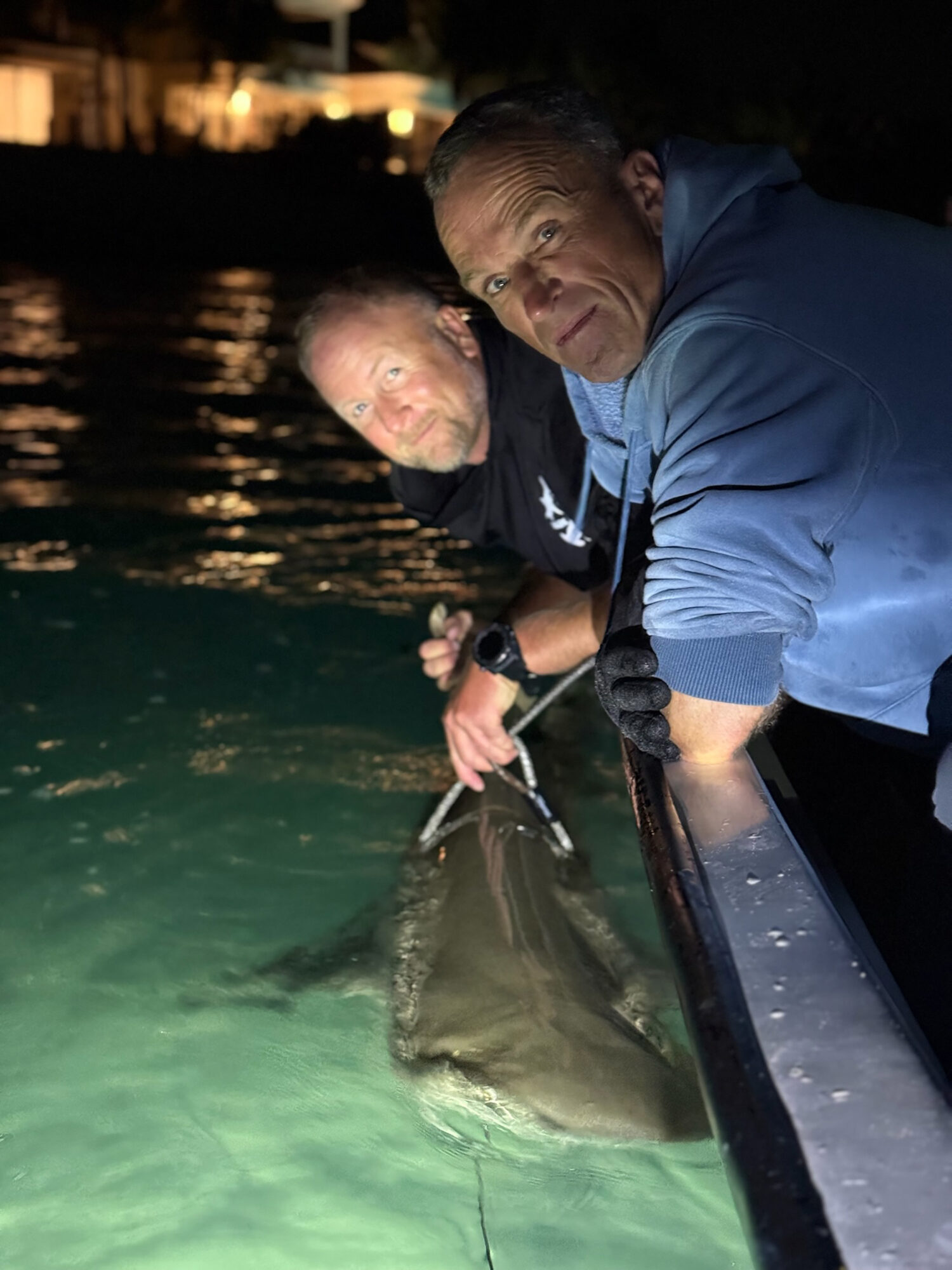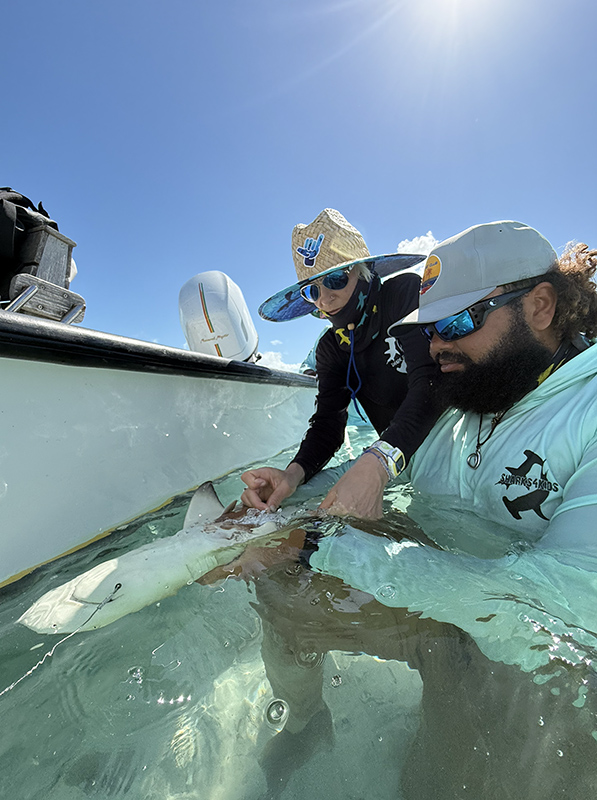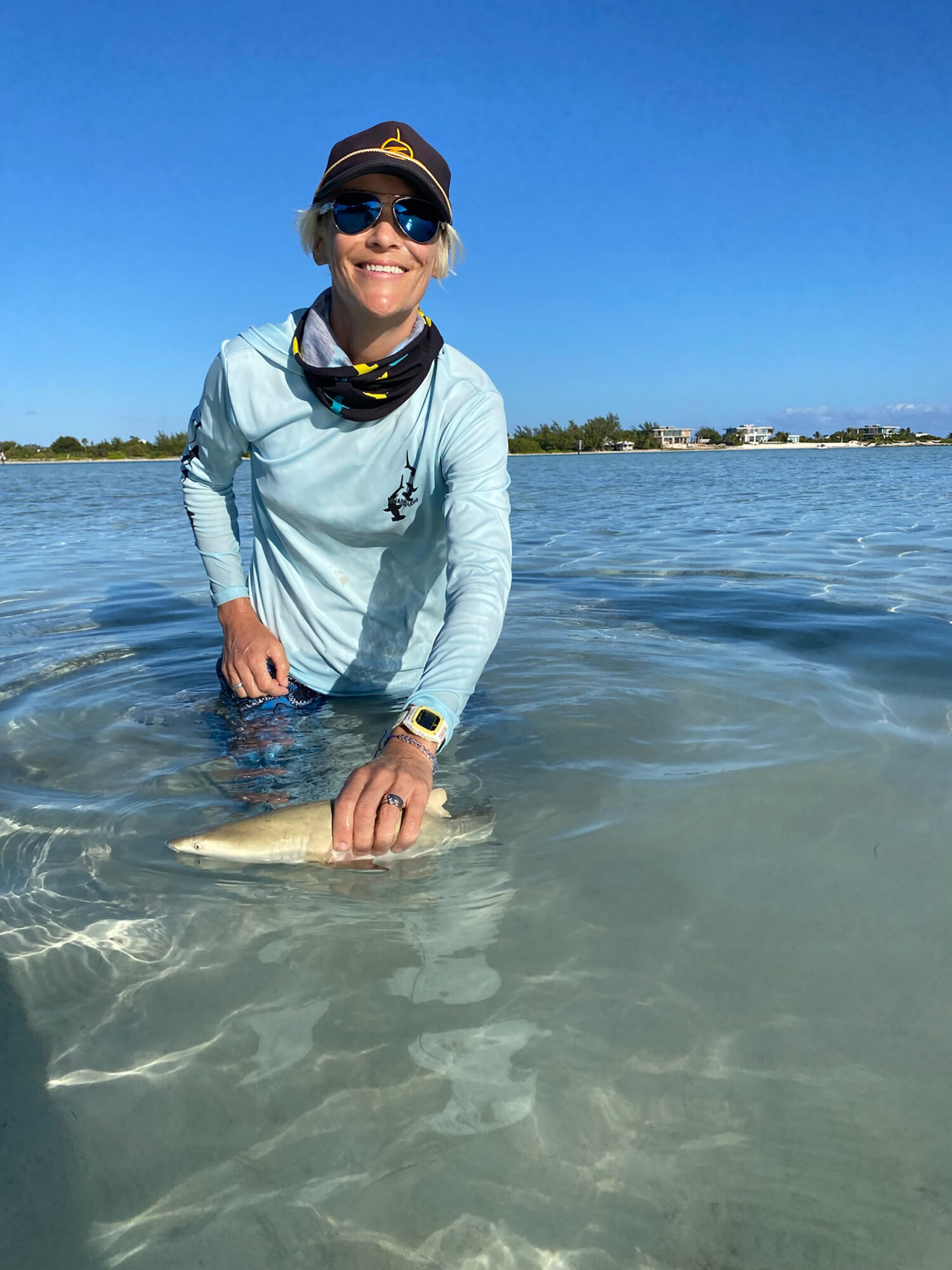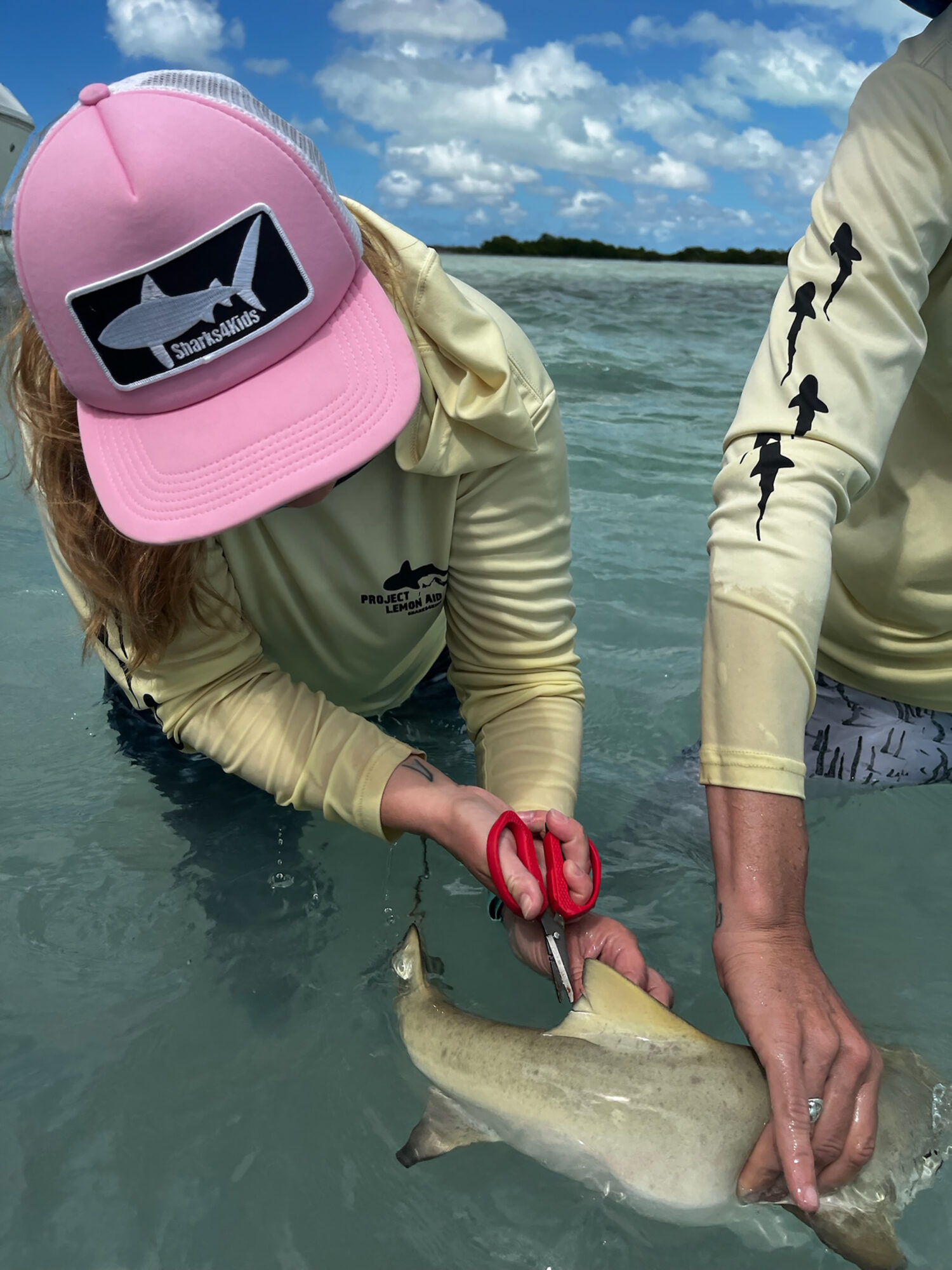Project Lemon Aid 2025: Expanding Our Understanding of Lemon Sharks
In May, our team returned to the Turks and Caicos for the fifth field season of Project Lemon Aid. It’s inspiring to reflect on how far the project has come and how much it has evolved since its early days.

Duncan Brake (Sharks4Kids) and Phillip Shearer (the owner of local partner Big Blue Collective) with a 2.03 cm adult lemon shark. This is the first adult lemon shark tagged in the project. Photo © Kaylam Pratt
This year, we spent nearly three weeks in the field. Alongside our core work, PIT tagging juvenile sharks and engaging with the local community, we introduced an exciting new component: acoustic tagging. The goal of this method is to determine where juvenile lemon sharks travel once they leave the relative safety of the mangrove nurseries. Acoustic telemetry provides a powerful means of studying shark behaviour, offering fine-scale data on movement patterns, habitat use, and site fidelity over extended time frames. With receivers deployed along the mangrove edges and across coastal habitats, we can quantify residency, daily activity cycles, and habitat connectivity with minimal disturbance to the animals. These insights are essential for identifying critical nursery and foraging areas, understanding environmental and human impacts, and shaping evidence-based conservation strategies to support healthy lemon shark populations in these vulnerable ecosystems.

Jillian suturing a lemon shark after implanting an acoustic tag. Photo © Duncan Brake
Our preliminary findings are already revealing fascinating patterns. Juvenile lemon sharks in the Turks and Caicos appear to be moving farther—and earlier—than expected, compared with observations from other locations. During this season, we recaptured a one-year-old shark that had traveled nearly six kilometres and crossed three deepwater channels. For such a small shark, this is extremely risky behaviour, especially with tiger sharks, blacktips, and great hammerheads patrolling those waters. By combining PIT tagging with our new acoustic array, we aim to identify the factors that drive these movements and determine whether other juveniles exhibit similar patterns. As ecotourism activities steadily increase in key nursery zones, it is possible that human presence is influencing these young sharks to take such risks.

Jillian with a Young of the Year lemon shark. Photo © Duncan Brake
We successfully deployed six acoustic tags this season, on sharks ranging in size from 74 to 203 cm. One of our most exciting highlights was the capture and tagging of our first adult lemon shark. Based on her condition, we believe she had recently given birth and was departing the mangroves for deeper waters. This moment represents a critical piece of the puzzle. We collected her DNA sample, which is now being analysed by Dr. Kevin Feldheim, and may allow us to match her to pups we’ve sampled in past years—or even to juveniles tagged this season. Her acoustic tag will help us track her movements and determine whether she returns to the same nursery area to give birth again, echoing maternal site fidelity observed at other lemon shark strongholds such as Bimini, The Bahamas.

Michelle taking a DNA sample from a lemon shark. Photo © Duncan Brake
We also identified several new areas of scientific interest that appear to be essential nursery habitats. Building an acoustic array around these zones will strengthen the case for protecting such biodiverse and critical ecosystems. At the same time, our PIT tagging program continues to provide insights into population size, while ongoing genetic analysis reveals how many adult females are using these mangroves as pupping grounds.

Local team member Luis shows students how to use the PIT tag reader. Photo © Michelle Jensen
Project Lemon Aid continues to grow, bringing together cutting-edge science, conservation, and education. Each season takes us closer to understanding the lives of these remarkable animals, and to ensuring their future in the waters of the Turks and Caicos.
